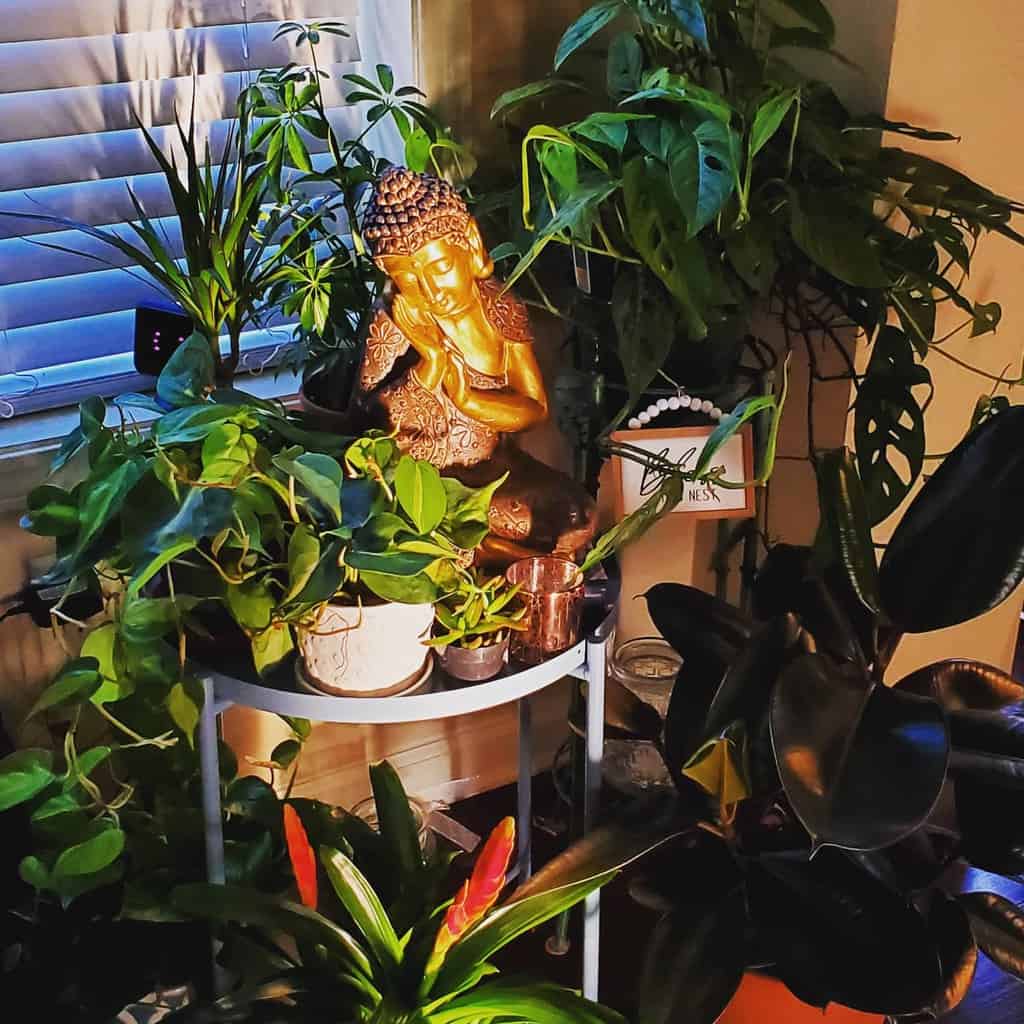
12 Zen Garden Ideas
A Zen garden is meant to be a serene place where visitors experience a state of harmony and tranquility. Originally created as an area for Buddhist monk meditation, today’s Japanese Zen garden designs still provide a place for people to ponder the deeper things of life. In fact, the word “Zen” is derived from a Sanskrit root that means “meditation.”
Unlike a plant-centric garden, a Zen garden’s minimalist foundation is stone: boulders, pebbles, gravel, and sand. It may or may not include water features. Explore our top 43 Zen garden ideas to learn more about creating your own version of these serene retreats.
1. Create A Rock Garden
A rock garden, also considered a zen garden, is an artful form of landscaping. It features minimal greens and plenty of rock, pebbles, and creative accents to evoke feelings of calm, security, and oneness with nature.
Creating a rock garden that is a masterpiece requires patience, vision, and skill. It’s essentially the sculpturing and arrangement of rocks in order to create an outdoor landscape that has a maximum impact but requires minimal maintenance.
A rock garden is sure to give your outdoor living space perfect balance and warmth – the perfect backdrop to enjoy time outdoors surrounded by nature.
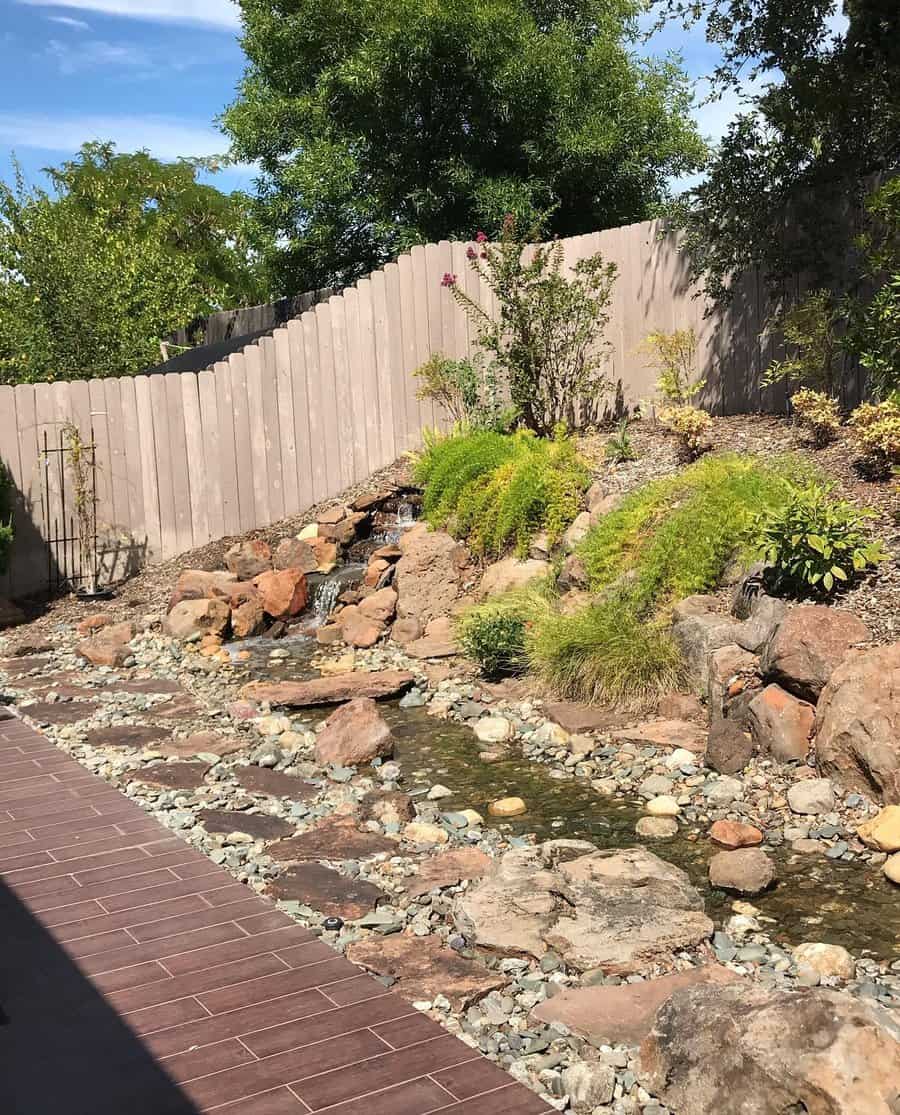
2. DIY A Koi Pond
A koi pond surrounded by a lush garden of green scaping is an excellent way to bring the calming effects of nature right into your own backyard. The adornment of the koi pond can be enhanced with white pebbles placed in strategic locations throughout the area.
Adding vibrant and exotic plants to the koi pond will also help to enhance any zen garden, providing a tranquil paradise in which visitors can breathe deeply and relax.
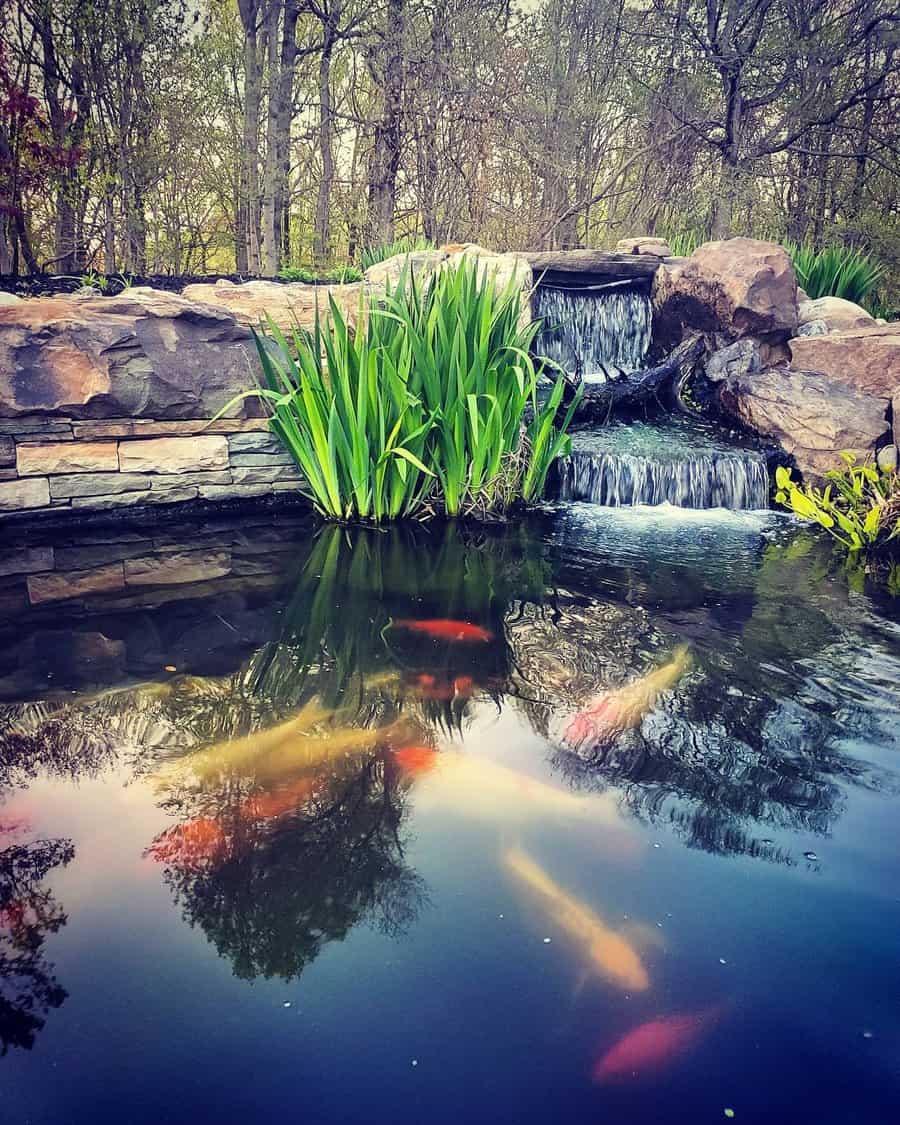
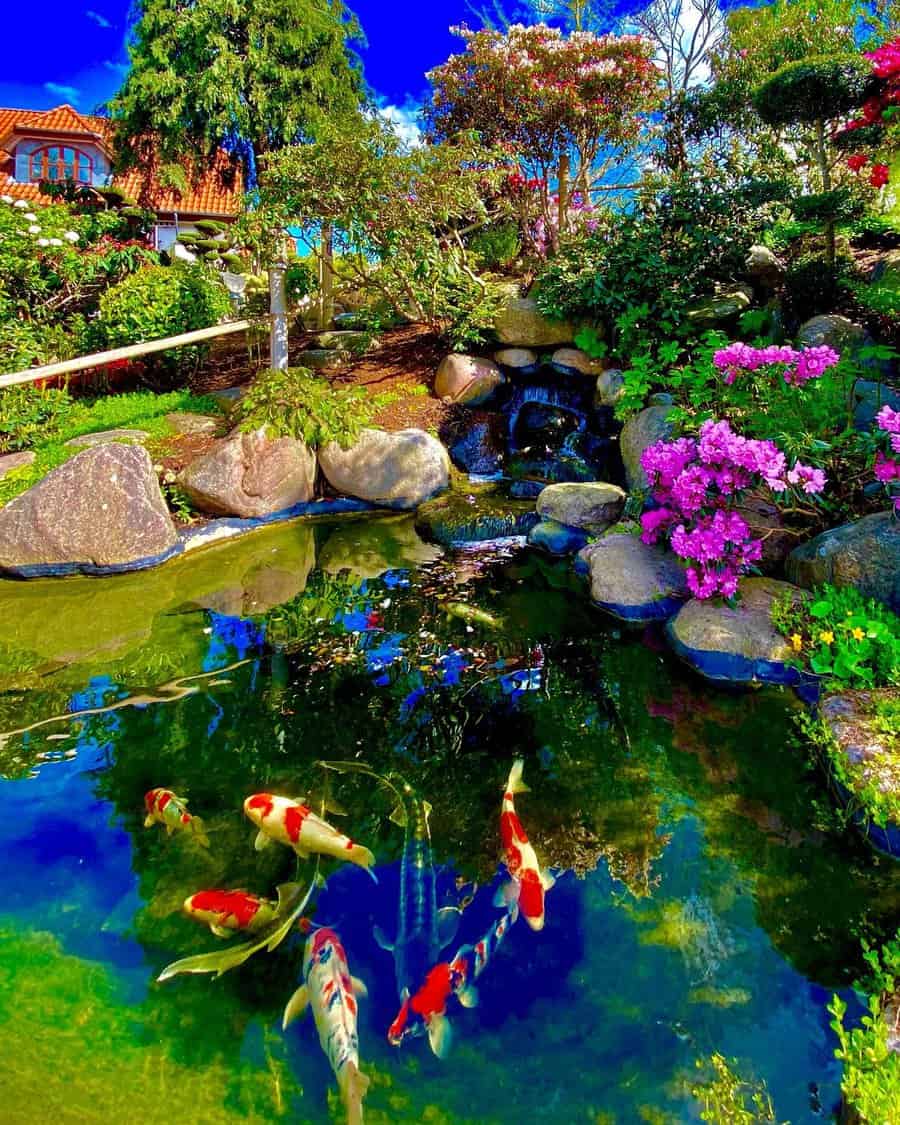
3. Add A Spiritual Garden Statue
The ideal zen space can be completed with a spiritual garden statue in your outdoor area. Not only do they add relaxing vibes and a unique topic of conversation, but your creative side can truly shine with different shapes, sizes, and motifs – think spiritual figures like Buddha or animals.
Let your imagination run wild and combine textures, stones, wood, and greenery to create the perfect spiritual atmosphere for relaxation. With a spiritual garden statue in your special outdoor space, you’ll have an idyllic retreat for peace and reflection.
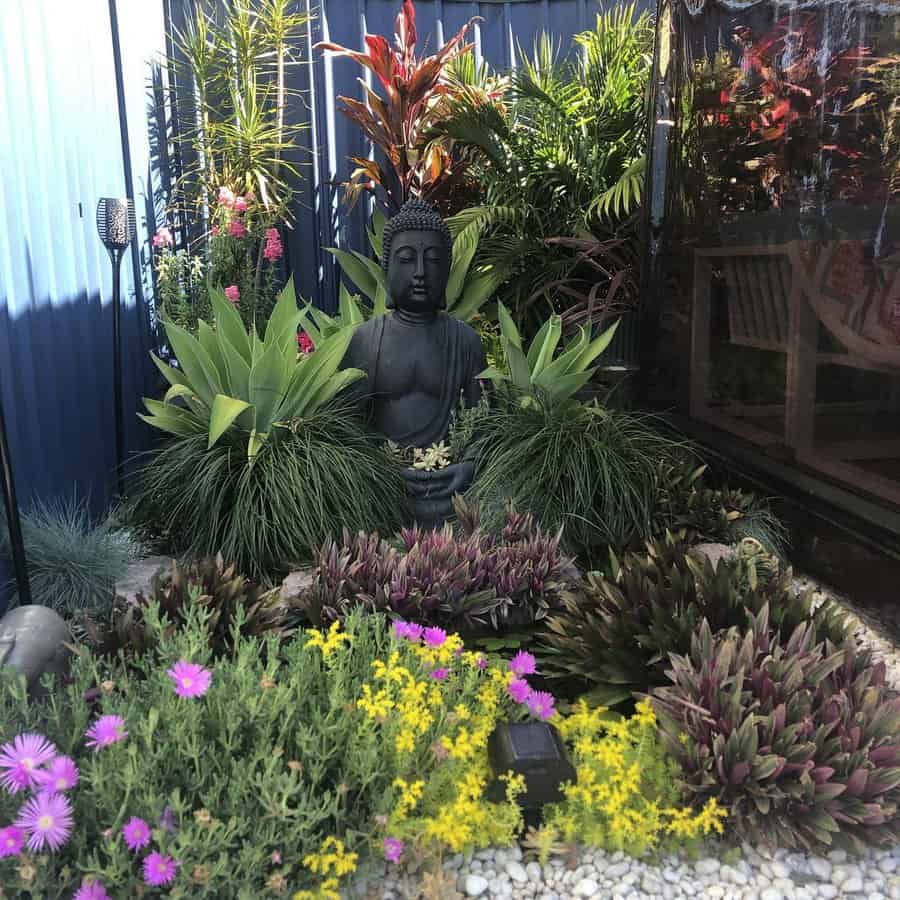
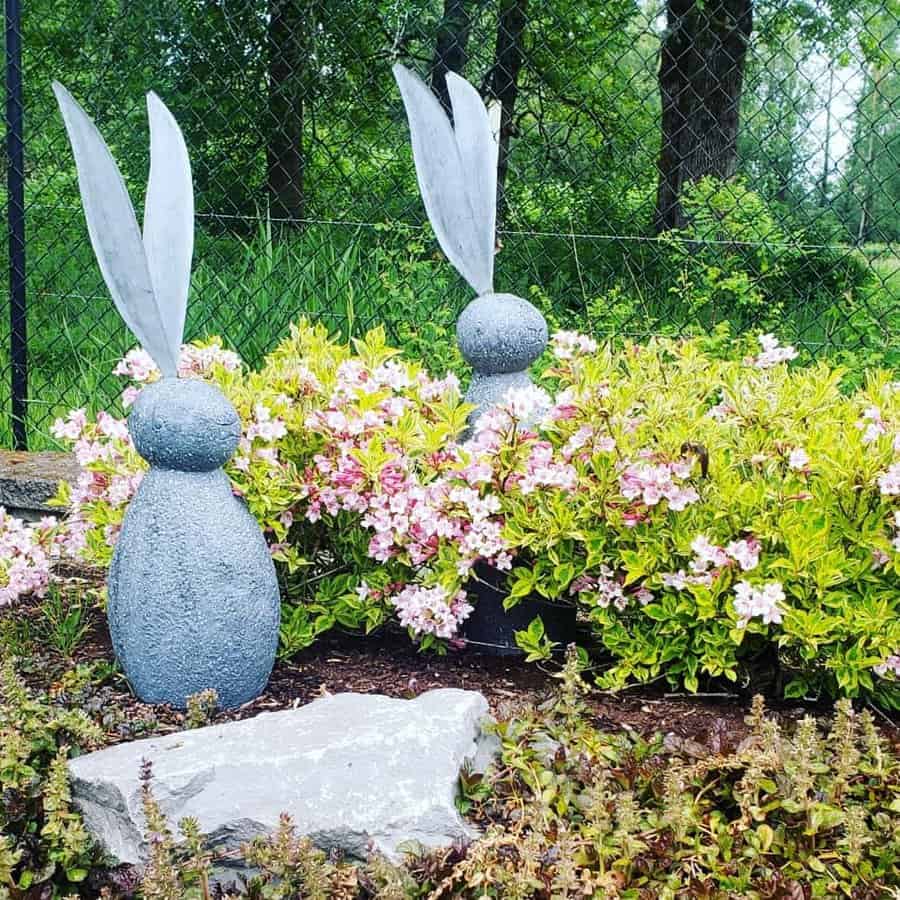
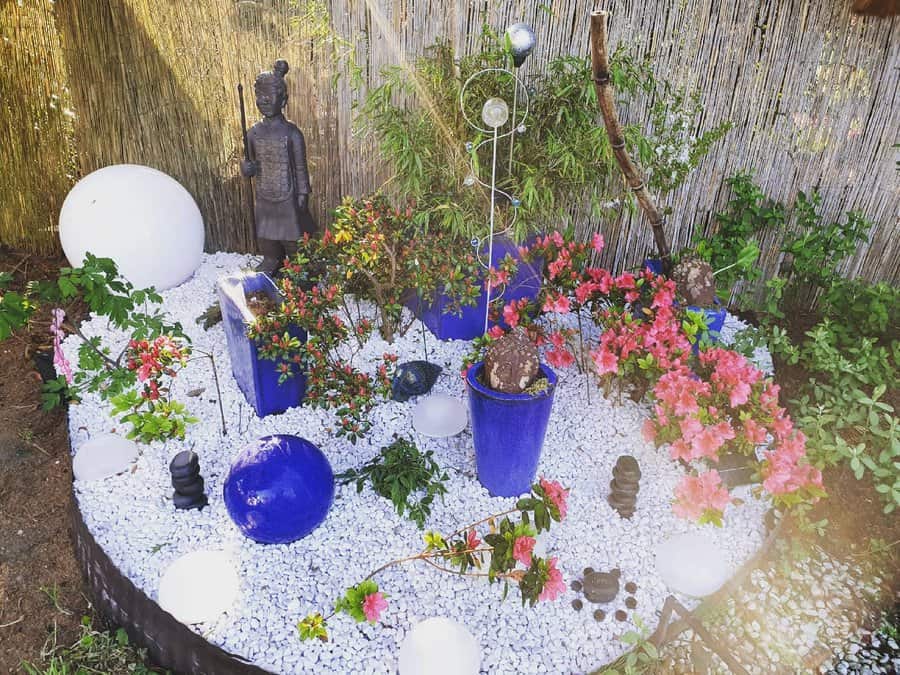
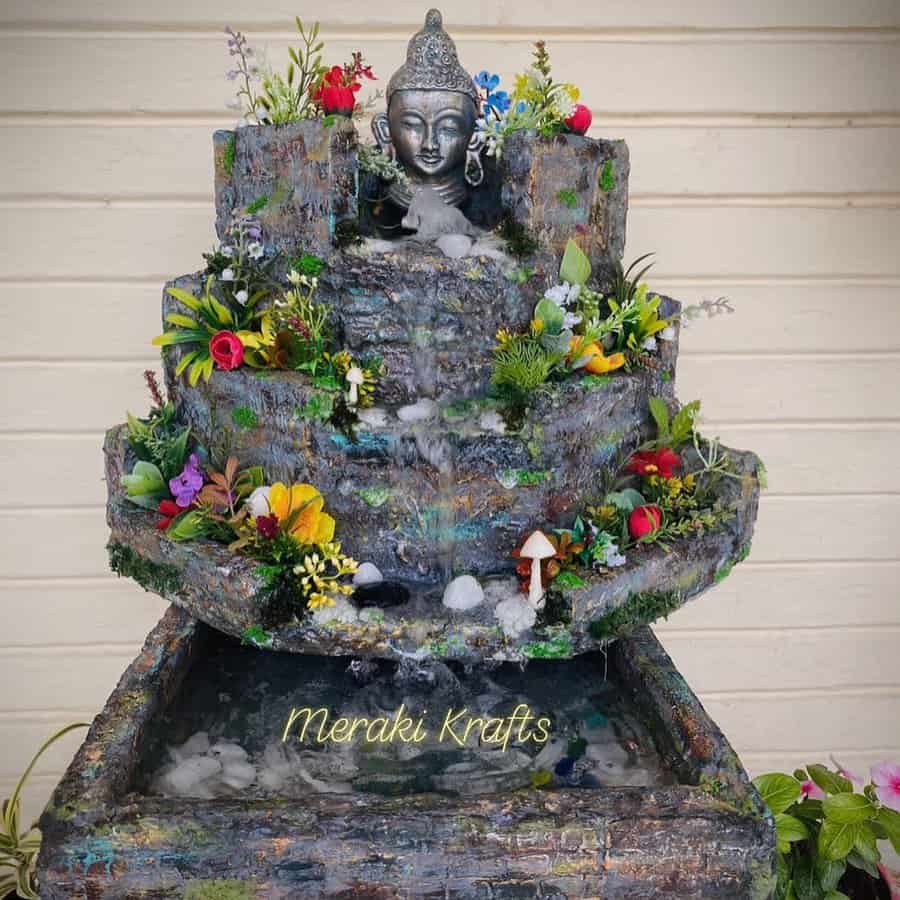
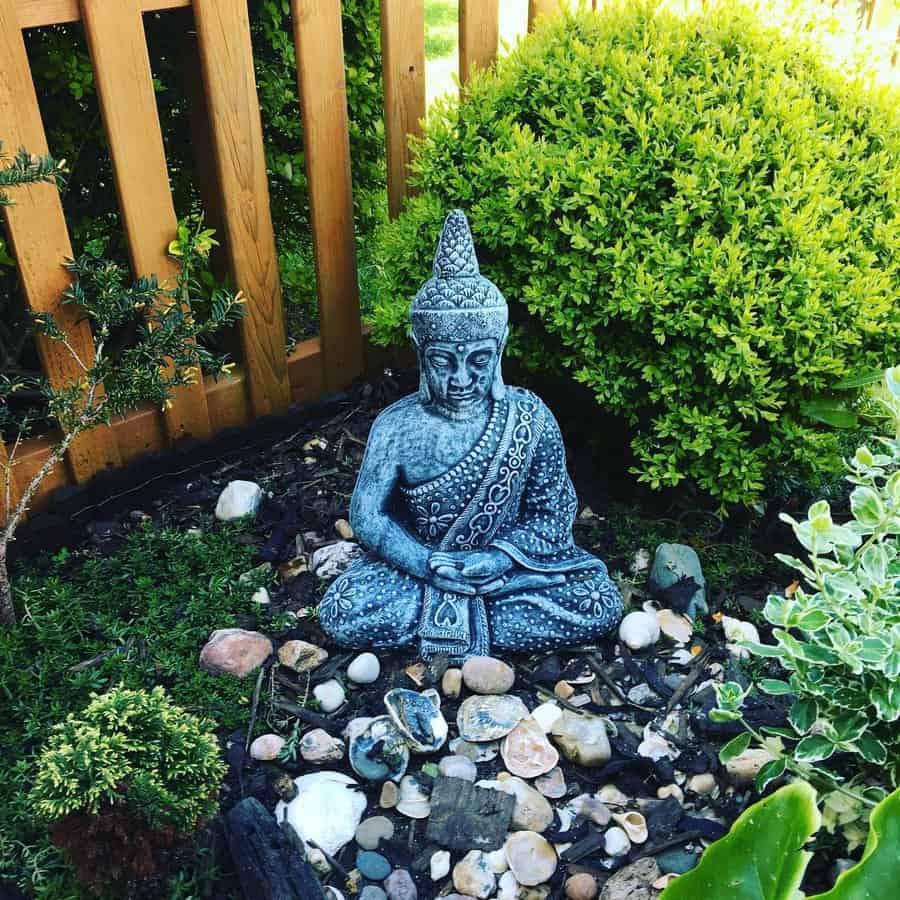
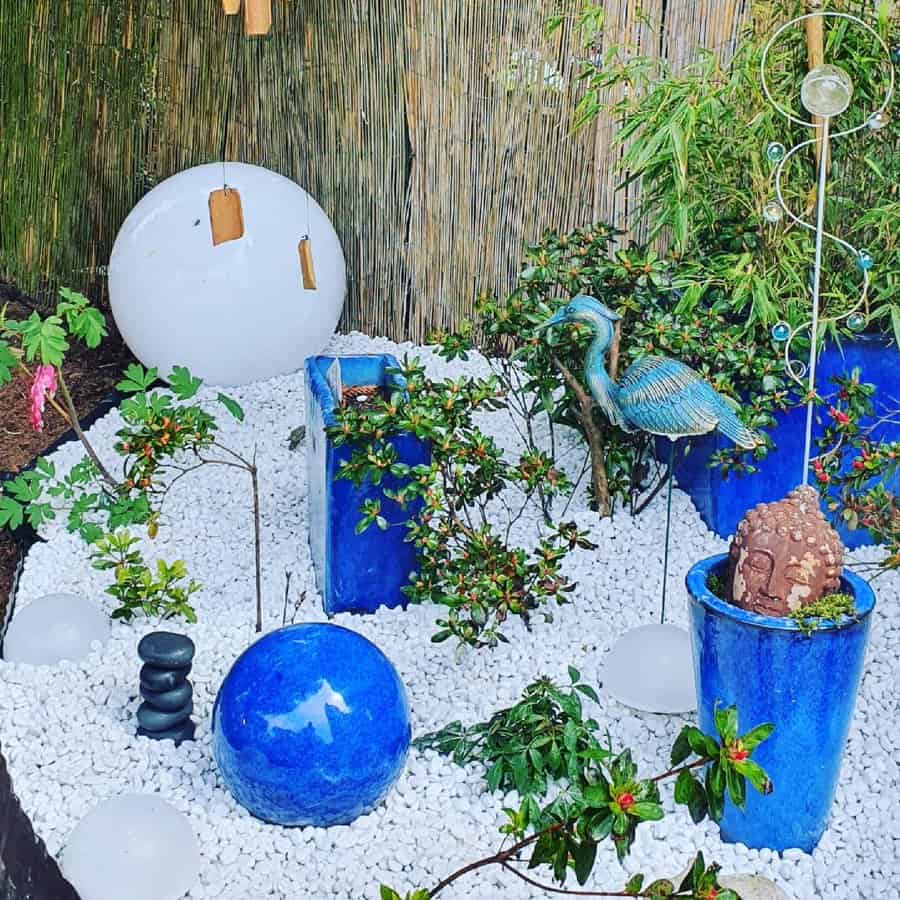
4. Build A Minimalist Wall Fountain
A minimalist wall fountain coupled with a corner landscaping adorned with pebbles, tame succulents, and mini bonsai is the focal point of a zen garden. As warmth and tranquility fill the air, it appears as if each element of this minimalist oasis plays its part perfectly in delivering a feeling of serenity that seems to ease away any stress or worry lingering in the mind.
Exquisite and peaceful, this minimalist corner with its beautiful harmony of plants and water feels like an invitation to slow down, reset and relax.
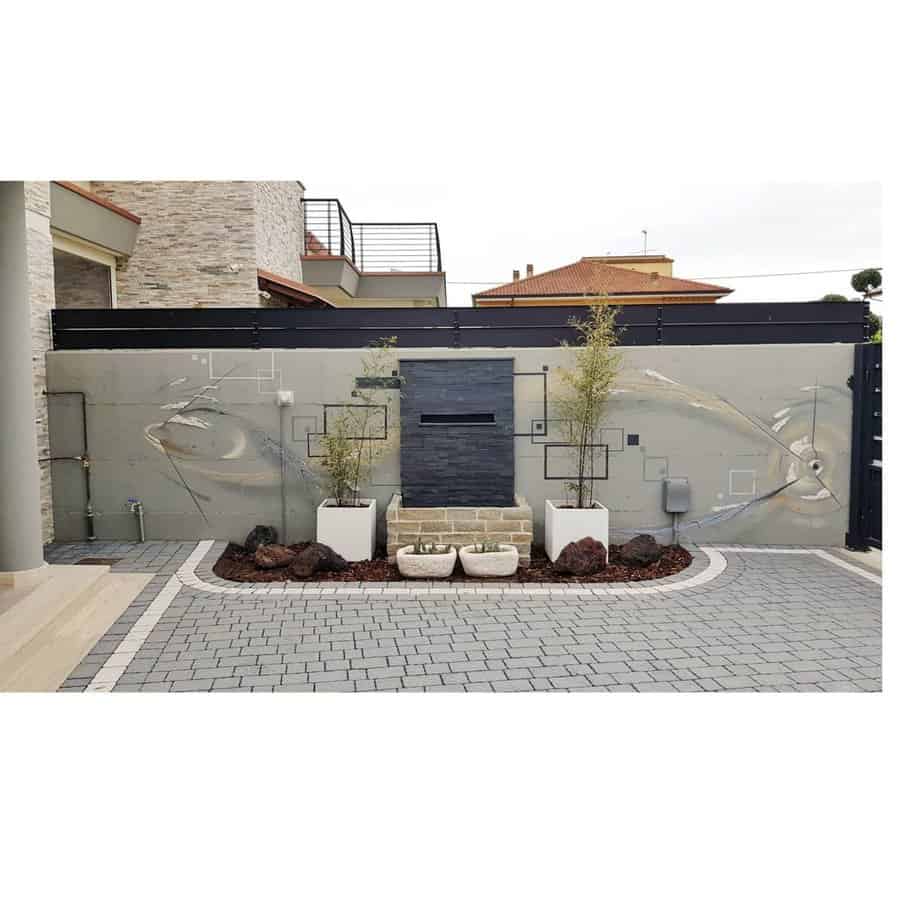
5. Cloud Trim Your Bushes
A zen garden with cloud-trimmed bushes creates a clean look that brings to mind the peacefulness of a deep green scape. As well-maintained bushes are trimmed and trimmed again, the effect soothes the soul in its pristine beauty, providing a calming respite from the hustle and bustle of everyday life. By simply visiting this tranquil haven, your inner peace can be restored.
If you’re looking for serenity or a break from your hectic day, visiting a zen garden with cloud-trimmed bushes might just do the trick!
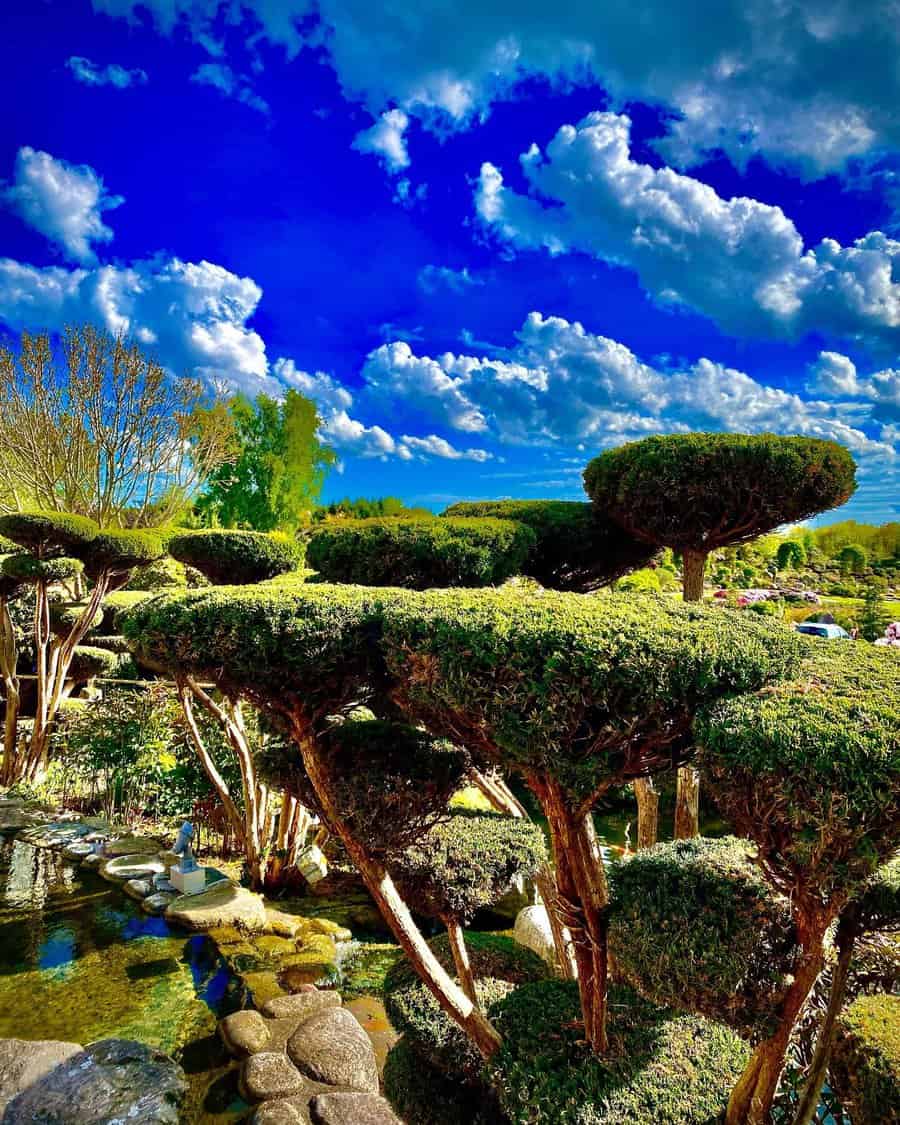
6. Add A Pop Of Color With Flowers
Zen gardens are a perfect way to express inner peace and tranquility in the natural world. One of the best ways to bring a unique twist to your zen garden is by adding some flowers! Growing flowers for a pop of color is like bringing artwork into your garden – it stands out vibrantly in a green landscape.
Whether you grow wildflowers, roses, or any other kind of flower, find creative ways to arrange and shape them in order to give your garden even more character.
With the right kind of flowers, you can create an intricately-designed oasis that reflects beauty and serenity.
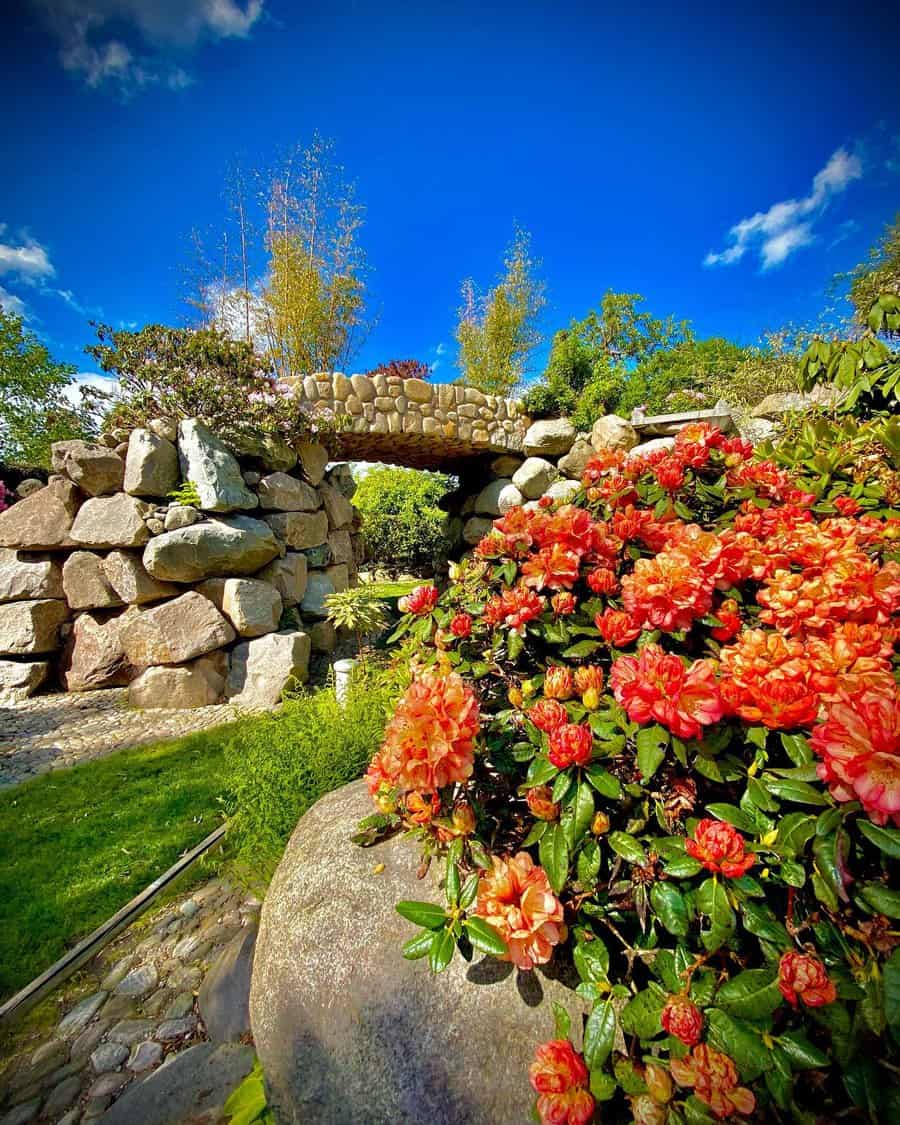
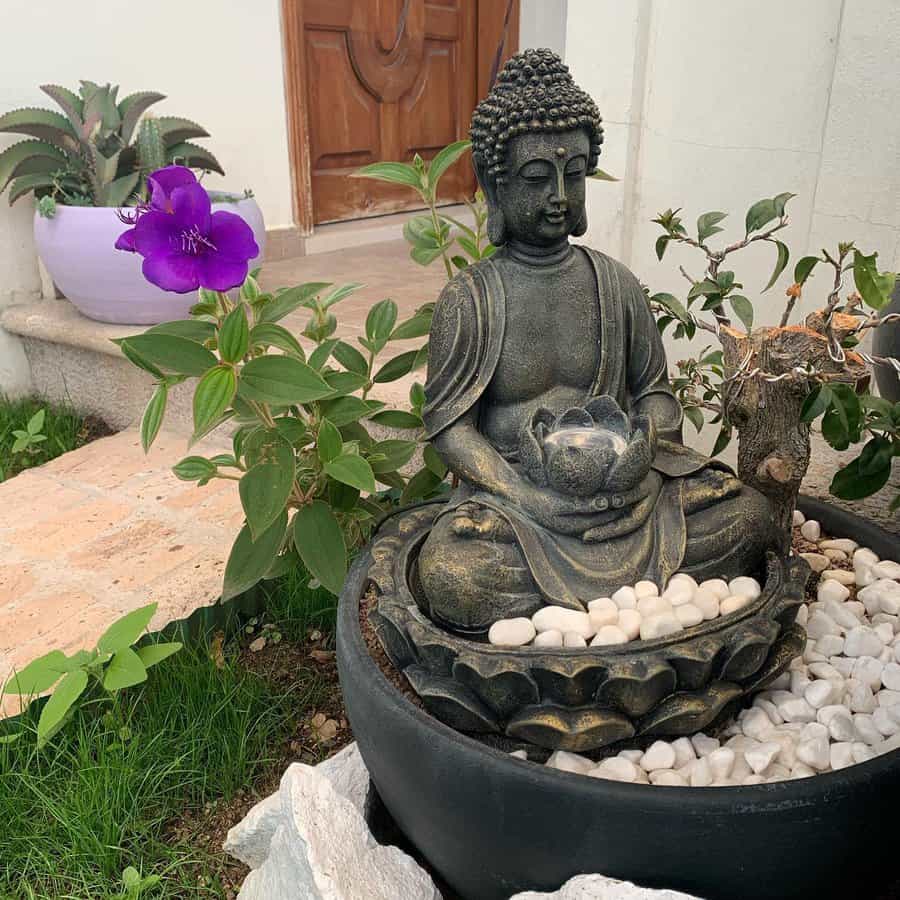
7. Create An ‘Altar For Microgreens
One great way to repurpose an old table is by turning it into a microgreen and propagation station, complete with its own little Buddha figurine overseeing the work.
With this setup, you can grow fresh vegetables, flowers, or herbs right in your living room while enjoying the meditative atmosphere created by the calming presence of your mini Buddha statues.
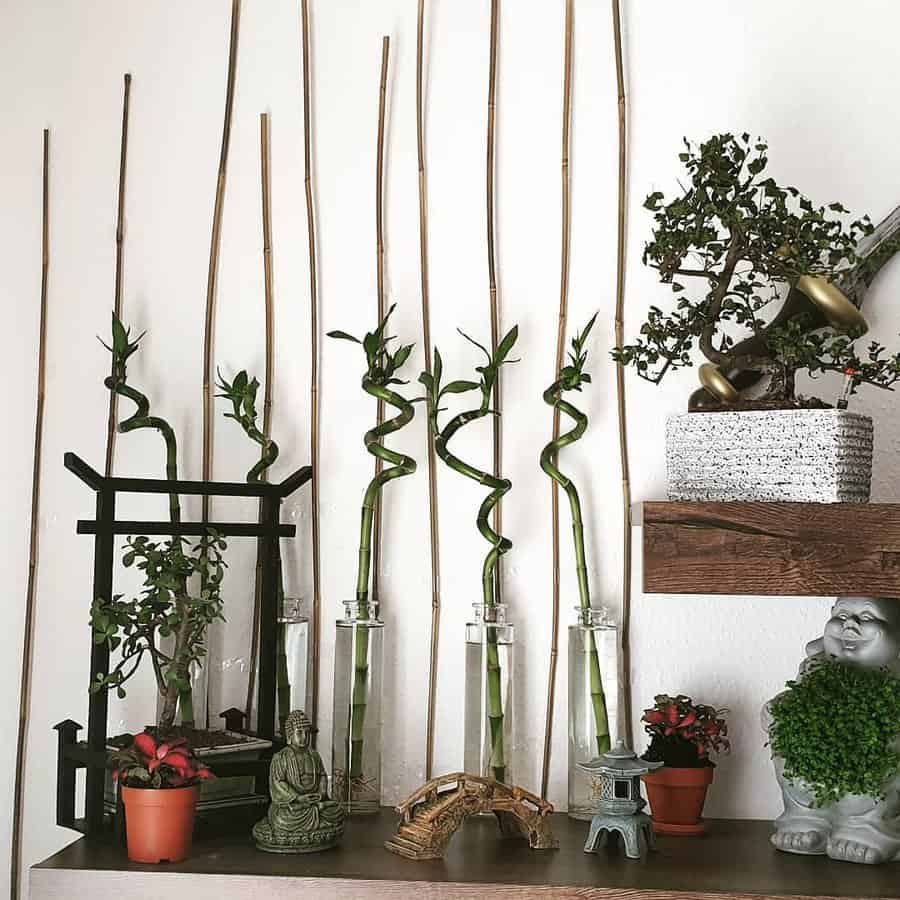
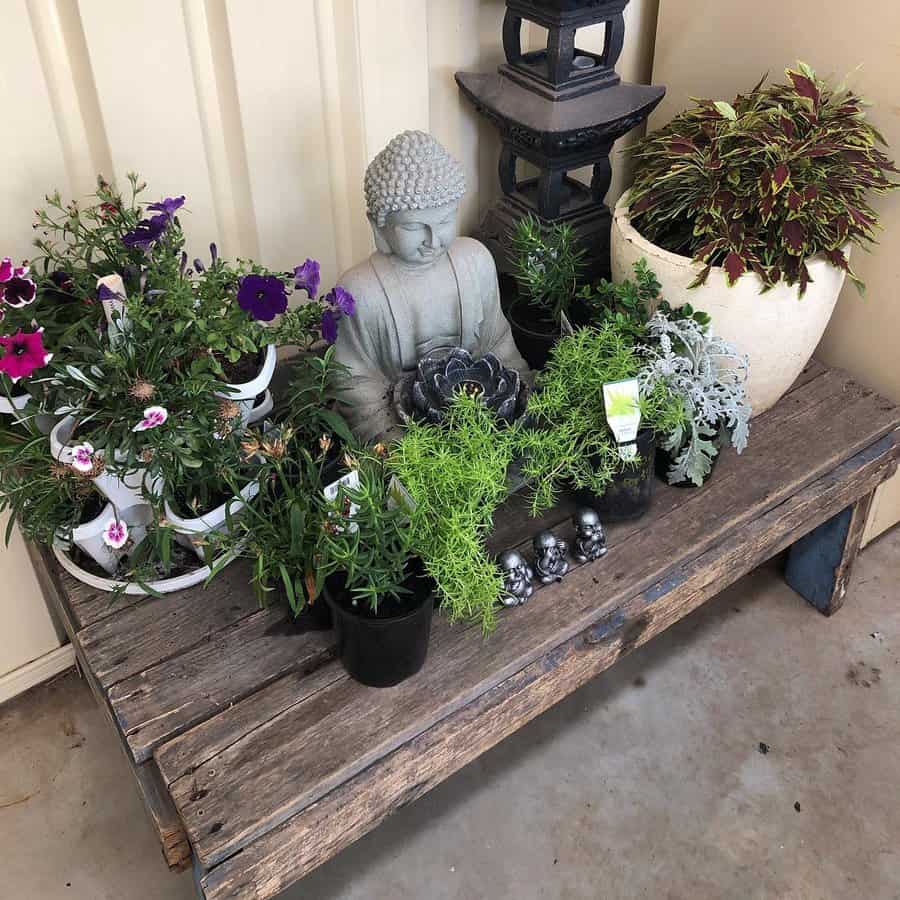
8. Grow Evergreens
A lush outdoor zen garden full of evergreen shrubs, sage, and pine trees with a tranquil pond winding through the center is sure to transport you to a peaceful place.
With the addition of a soft Japanese stone lamp providing subtle illumination and pockets of moss providing lush texture beneath your feet, there’s something captivating about this zen garden that will keep you enthralled for hours as you meander through each corner. It’s the perfect escape for a Sunday afternoon stroll whether it be for relaxation or serious contemplation.
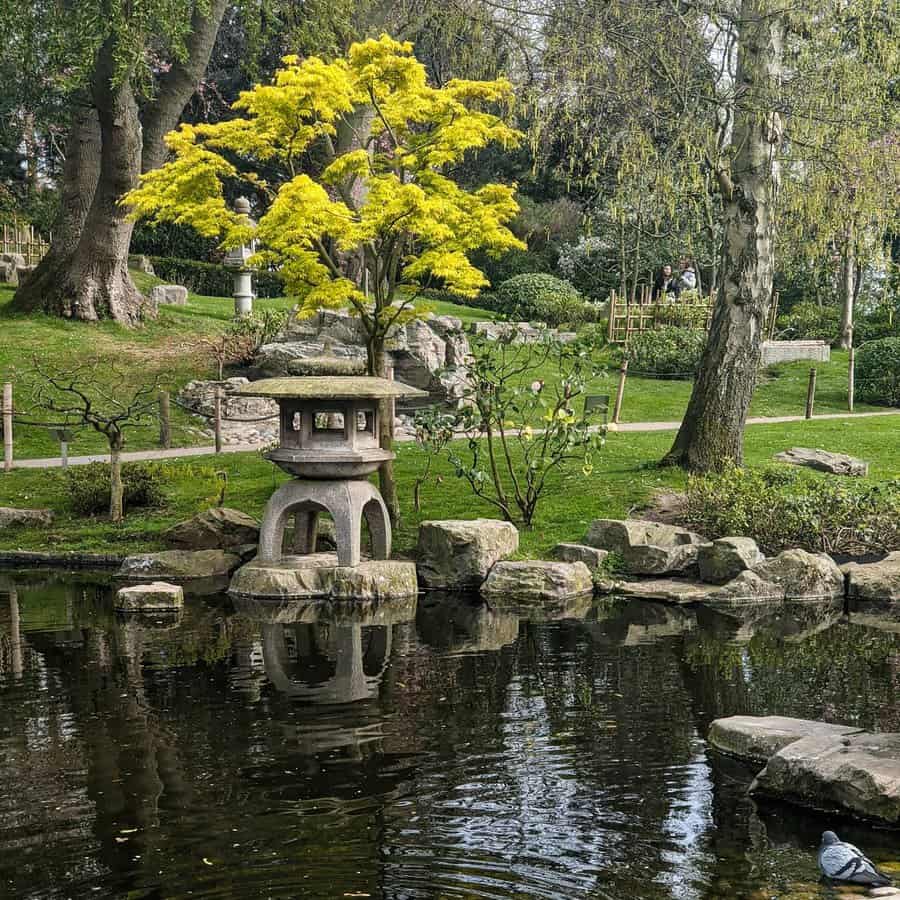
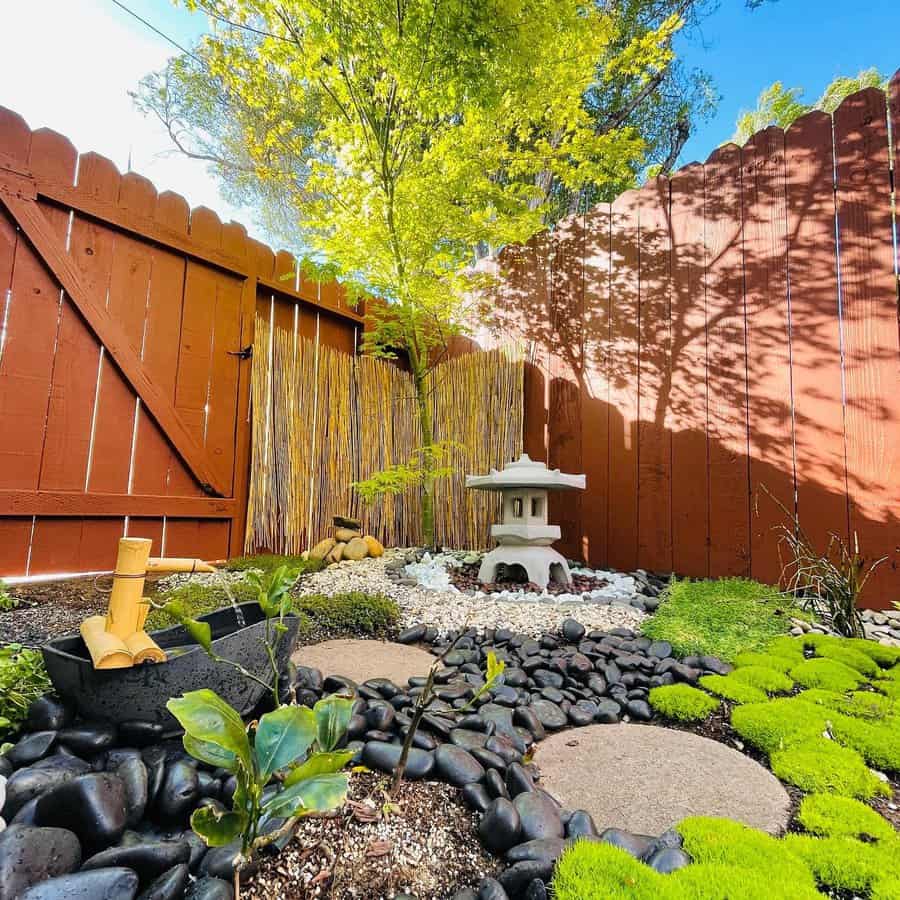
9. Create A Corner For Crystals
A zen garden with a crystal altar is an idyllic space for gaining peace and clarity. The energy of the crystals surrounding the altar produces an uplifting vibration that amplifies your creative thoughts and emotions.
The crystal altar acts as a focal point to infuse your vision with heightened guidance and wisdom, illuminating insight into any situation and restoring balance in life. Spend time in this sanctified environment to be enveloped in gentle, loving energy that nurtures the soul.
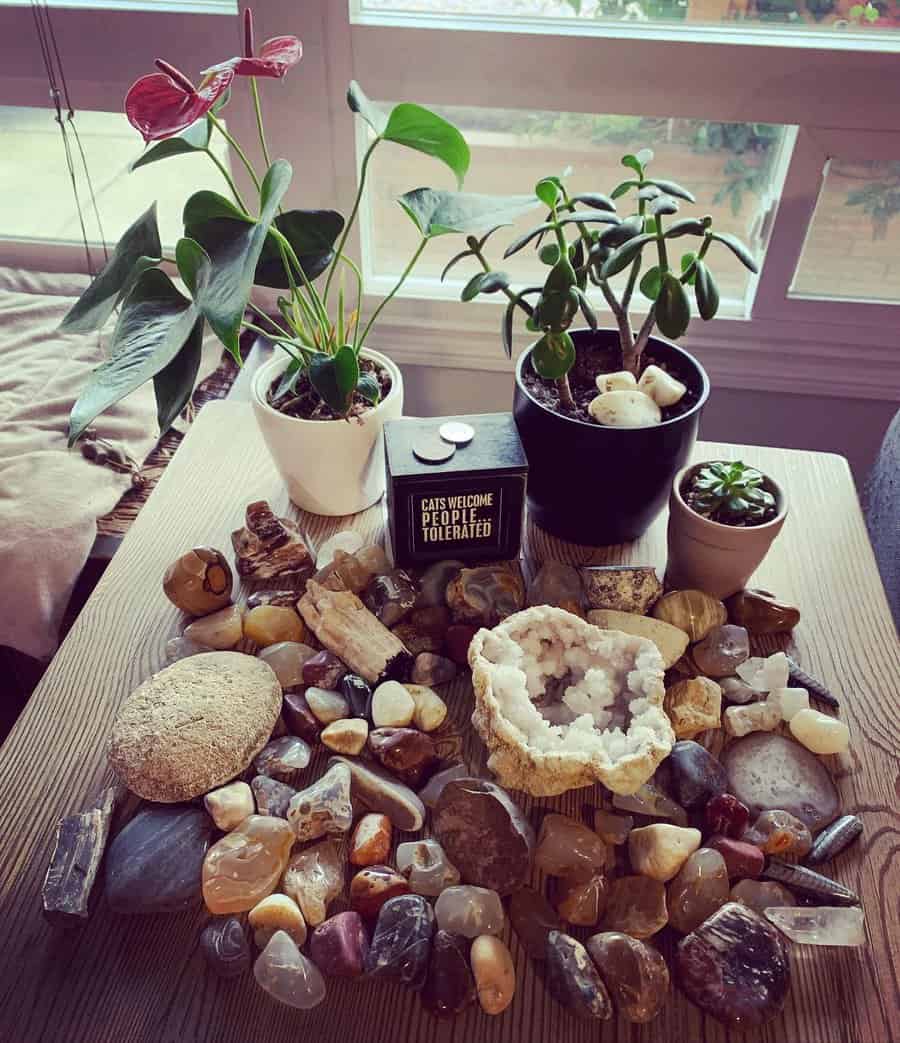
10. Cultivate Moss
The beauty of a zen garden with moss is breathtaking. With its lush green hue, cultivated moss can transform a small patch of earth into an enchanted paradise. Whether you have enough room to have a full-fledged outdoor garden or prefer something smaller, like a potted moss terrarium, the result will be just as stunning.
The deep emerald tones of freshly grown moss are sure to light up your home and calmingly captivate anyone who passes by. Let the natural beauty of cultivated moss take your zen garden to the next level!
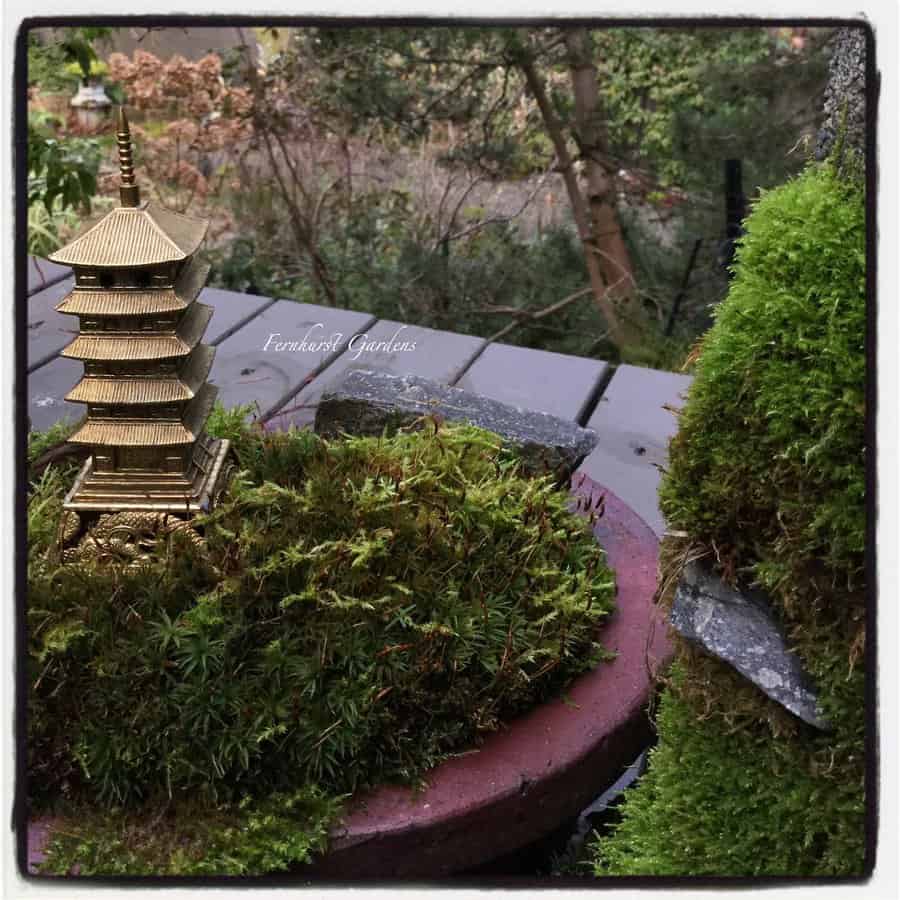
11. Craft A Micro Zen Garden
Create your own zen in your very own zen garden terrarium! This mini micro garden will provide an experience of mindfulness and serenity and bring the tranquil essence of a zen garden into any space! It is easy to construct and care for, requiring only moss and a few pebbles to decorate your zen paradise.
With very little time it can turn any room or space of relaxation into one that promotes zen harmony. Let your zen garden help clear your mind of anxieties as you take a moment to think clearly and restore peace within yourself.
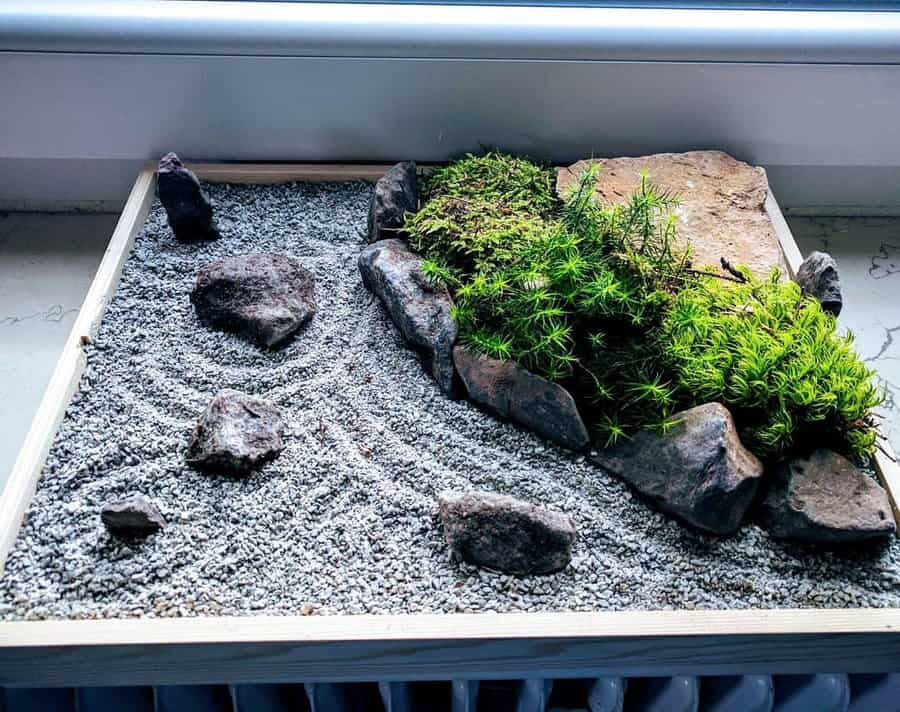
12. Build A Private Pavilion
Instantly transform your outdoor space into a peaceful oasis with a covered multi-purpose patio and pavilion. This zen garden is the perfect place for relaxation and meditation, allowing you to clear your mind and restore balance.
With the covered pavilion shielding you from any distractions, it becomes easier to achieve deeper levels of relaxation and focus on what is most important in life. Create your own personal paradise with a tranquil zen garden!
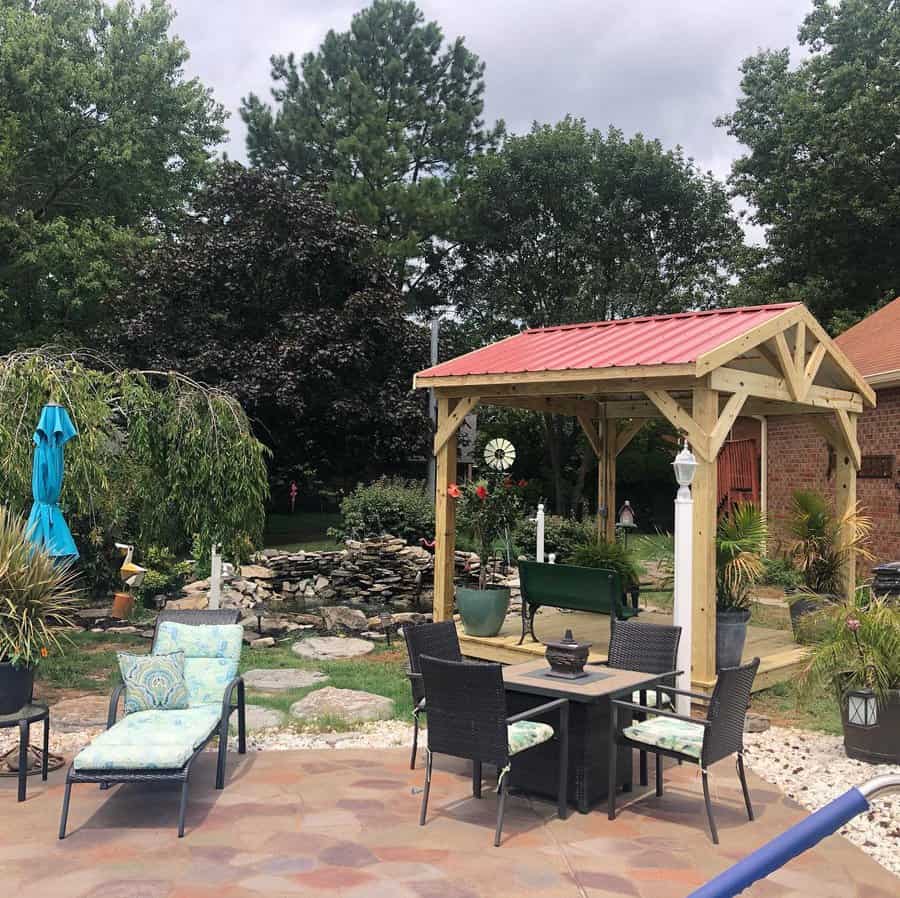
Zen Garden FAQs
Bridges, or hashi, appear frequently in Japanese landscape design as well as in Zen garden design. They represent a transitional journey from one plane of existence to another. However, to many Japanese garden designers, a bridge is simply an element that allows visitors to pause and reflect on the beauty surrounding them.
While Zen garden ideas primarily focus on rocks, sand, and gravel, many people find a garden more pleasing when it includes a variety of plant species. Classic Japanese garden design often incorporates one or more of the following:
- Bonsai
- Dwarf conifers
- Topiaries
- Bamboo
- Japanese maple trees
- Azaleas
- Ferns
- Creeping ground covers
- Sedges
- Moss
